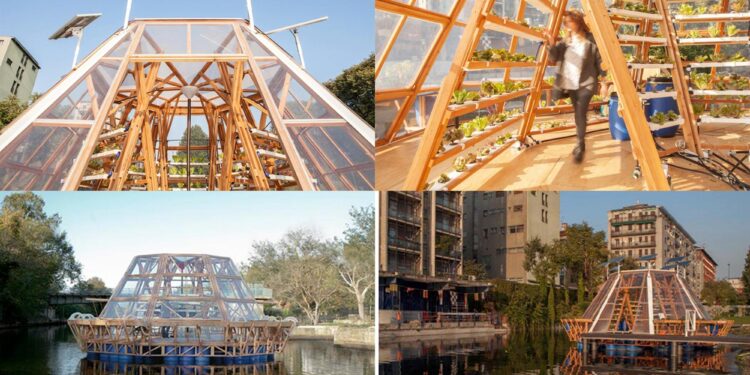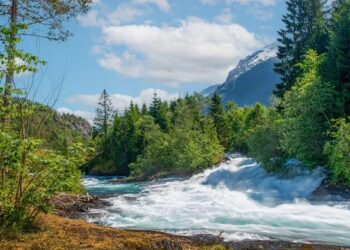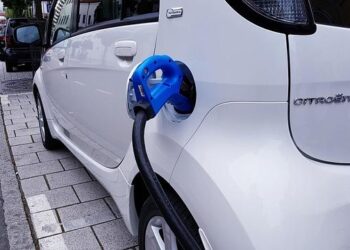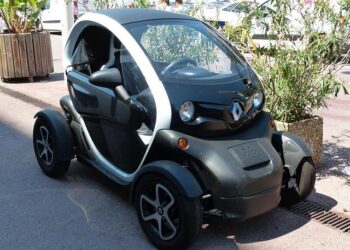Images of a floating greenhouse moored along Norway’s scenic coastline have recently gone viral, igniting widespread discussion about the future of sustainable agriculture. The innovative concept, blending aquaculture with controlled-environment farming, promises to tackle challenges such as limited arable land and climate change. However, experts and industry insiders remain divided on whether these floating farms can move beyond a captivating idea to become a viable solution for food production. This article explores the technology behind Norway’s floating greenhouse, its potential benefits, and the debates stirring within the horticultural community.
Floating Greenhouse Concept Challenges Traditional Agricultural Methods in Norway
The innovative floating greenhouse concept recently showcased in Norway is challenging established agricultural paradigms by placing crop production on water surfaces. Advocates highlight its potential to reduce land use pressure and integrate renewable energy sources, such as solar panels and water-based cooling systems, into the growing environment. This model could prove especially beneficial in regions with limited arable land or harsh climatic conditions, offering a sustainable alternative that minimizes soil degradation and enhances resource efficiency.
However, skeptics raise concerns about the practical challenges of this approach. Issues such as structural stability in rough weather, maintenance costs, and the impact on local aquatic ecosystems remain under debate. The dialogue surrounding floating greenhouses is intensified by viral images illustrating their sleek design and futuristic appeal, yet the real-world scalability and economic feasibility require further investigation. Below is a quick comparison highlighting some potential advantages and challenges:
| Aspect | Potential Advantages | Challenges |
|---|---|---|
| Land Use | Conserves terrestrial farmland | Limited expansion potential on waterways |
| Environmental Impact | Reduced soil erosion and runoff | Potential disruption of aquatic habitats |
| Energy Efficiency | Integration with solar and water cooling | Energy costs for stabilization and pumping |
| Operational Costs | Innovative resource use | High initial investment |
Environmental Impact and Sustainability Concerns Raised by Experts
Experts caution that while floating greenhouses present an innovative approach to agricultural expansion, they also raise serious environmental concerns. The potential disruption to marine ecosystems is a primary issue, as the installation and operation of such structures could affect water quality, local biodiversity, and natural ocean currents. Additionally, the materials used and the energy required to maintain these greenhouses must be carefully evaluated to avoid unintended carbon footprints. Environmentalists emphasize the need for comprehensive impact assessments to ensure that the benefits of innovative farming do not come at the expense of fragile aquatic habitats.
Another dimension of the debate revolves around the sustainability and scalability of these floating structures. Critics argue that while they may reduce land use pressure, the technology demands significant investments and ongoing maintenance, which might not be feasible for all regions. Concerns have also been raised about the longevity and recyclability of the equipment, highlighting the importance of designing greenhouses that align with circular economy principles. Below is a brief overview of the key sustainability aspects experts recommend monitoring:
| Aspect | Potential Issues | Suggested Measures |
|---|---|---|
| Energy Consumption | High electricity use for climate control | Integration of renewable energy sources |
| Material Waste | Non-recyclable construction materials | Use of biodegradable and recyclable components |
| Marine Impact | Disruption of habitats and water quality | Environmental monitoring and adaptive management |
Experts Call for Comprehensive Studies to Assess Viability and Long-Term Benefits
Industry experts emphasize the necessity of rigorous scientific evaluation before embracing floating greenhouses as a sustainable agricultural innovation in Norway. While the viral images showcase impressive engineering feats, questions remain about their environmental impact, energy consumption, and economic feasibility over time. Specialists urge multidisciplinary studies that combine marine biology, horticulture, and climate science to fully understand how these structures interact with local ecosystems and weather patterns.
Key areas highlighted for investigation include:
- Impact on marine biodiversity and water quality
- Energy requirements versus productivity gains
- Long-term resilience to harsh Nordic weather conditions
- Cost-benefit comparison with traditional land-based greenhouses
- Scalability potential for commercial farming
| Study Focus | Potential Benefit | Challenge |
|---|---|---|
| Marine Ecosystem Impact | Preservation of biodiversity | Preventing pollution |
| Energy Efficiency | Lower carbon footprint | High initial power needs |
| Structural Durability | Long-term use | Resistance to storms |
Such comprehensive research could pave the way for informed policy-making and targeted investment. Taking a cautious but open-minded approach, experts call on stakeholders to collaborate internationally, ensuring that floating agricultural technology not only promises novelty but delivers sustainable, scalable solutions for future food production.
Future Outlook
As the floating greenhouse concept gains international attention, the debate over its practical viability continues. While the innovative approach promises to address land scarcity and enhance sustainable agriculture in coastal regions, experts caution that further evaluation is necessary to assess long-term economic and environmental impacts. Moving forward, stakeholders will be watching closely to see whether this bold experiment in Norway can translate viral interest into meaningful advancements in global horticulture.
















